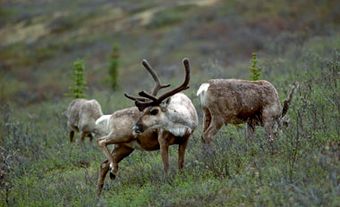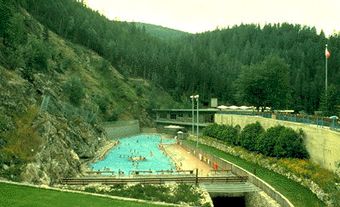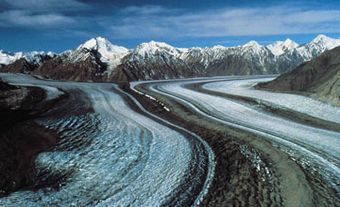In 1970, an agreement was signed to establish Gros Morne National Park (1805 km2) on the west coast of Newfoundland. In 1987 Gros Morne National Park was designated a United Nations World Heritage Site because of its glacial and geologic history.
Natural History
This spectacular landscape was created by the grinding action of glaciers on the ancient Long Range Mountains. Barren rocky ridges and tundralike slopes contrast with forested foothills and boggy coastal plains, where mosses and pitcher plants thrive. The presence of caribou and arctic hare reflect the northern character of the park. Marten inhabit dense forest areas, while moose and snowshoe hare, although not native, are frequently observed. Terns and gulls abound along the coast; ptarmigan typify the bird life of the heathlands and barrens.
Human History
Pre-European culture in the area dates from 2500 BC, when the Maritime Archaic peoples inhabited the area. Dorset and Beothuk cultures followed. European contact was established with the arrival of Jacques Cartier in the adjacent Gulf of St Lawrence (1534); however, European settlement did not occur until the late 1800s.
Facilities
The park has facilities for tent and recreational-vehicle camping and for primitive winter camping. In summer, hiking, fishing and cool saltwater swims are popular. Visitors in winter can cross-country ski, snowshoe and snowmobile.

 Share on Facebook
Share on Facebook Share on X
Share on X Share by Email
Share by Email Share on Google Classroom
Share on Google Classroom





